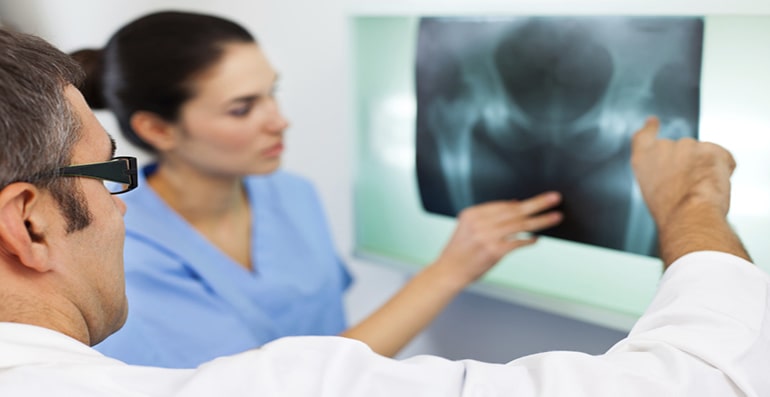Orthopedic surgery procedures
Orthopedic Surgery provides diagnosis and treatment of musculoskeletal system diseases and injuries.
Orthopaedics is a specialty of immense breadth and variety. Orthopaedists treat a wide variety of diseases and conditions, including such common injuries as :
Our Procedures:
Hip replacement
Forget about the pain and the physical impediment of a bad hip with our replacement procedure.
Orthopedic surgery treats diseases, trauma (fracture, rupture, hematoma) and deformities of the musculoskeletal system: bones, joints, ligaments, tendons and muscles. In the past, it was limited to the sole treatment of fractures, it is now developing in other areas: joint prostheses, bone grafts as well as endoscopic surgeries. The role of the Orthopedic surgeon is to ensure the functional correction of the musculoskeletal system this includes performing surgery and, making small incisions (arthroscopy).
The intervention has different stages: the preoperative examination, predicts the extent of the intervention, the procedure itself (repairing of fractures, replacing painful joints by artificial joints, or correcting a malformation) and of course the, postoperative follow-up. Any Surgery can present risks during the intervention such as anesthetic risks, hemorrhages and, infections. The surgeon will clearly outline the risks, difficulties and modalities of the surgical procedure that they will carry out.
Hip replacement:The hip joint is a spheroid joint or "ball joint"; this is what allows us to move the hip in all directions. The joint has the rounded end of the thigh bone (femur), which is located in the cavity (acetabulum) of the pelvis. These are muscles and ligaments that support and strengthen the joint. Osteoarthritis is the most common reason for joint replacement because it causes deterioration of the cartilage at the ends of the bones. I It usually manifests itself in the joints that carry the weight of the body, including the hips and knees. Osteoarthritis can cause pain and joint stiffness. Orthopedic surgeons can repair severely damaged joints by means of Hip replacement surgery. Total hip replacement procedure involves replacing the affected joint with an artificial joint (prosthesis). In fact, the surgeon first makes an incision and then moves the muscles and ligaments away from the hip. Then he replaces the head of the thigh bone with an artificial joint and stem. After that, the practitioner polishes the basin cavity and inserts a cup, assembles the joint by installing the patella in the cup. Once the new joint is in place, the surgeon repairs the muscles and ligaments, then sutures the incision with stitches or with staples (the staples are metal clips that hold the skin while the incision heals). The hip replacement surgery lasts about 2 hours.
Knee replacement:When the knee joint is worn or damaged, the surgeon replaces the two surfaces of the joint, the lower part of the femur and the upper part of the tibia, with a femoral and tibial prosthesis. Sometimes the surface of the patella can also be replaced. This type of surgery is called arthroplasty or a complete replacement of the joint.
The purpose of the surgery is to reduce the patient's pain level and increase the level of mobility. The knee replacement procedure takes approximately 2 hours. The surgeon first makes an incision and then moves the muscles and ligaments away from the knee. He then reshapes the damaged bones in order to install the prosthesis. The end of the femur and the tibia are covered with a metal surface separated by a piece of plastic. If the kneecap is damaged, it could also be covered with a plastic disc. Once the new artificial joint is in place, the surgeon repairs the muscles, then closes the incision with stitches or staples. The hospitalization will last 1 to 3 days, depending on the patient health condition.

